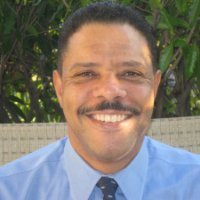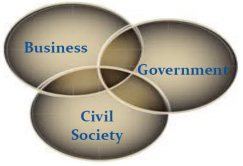Op-Ed: Economic Justice: Part 2 by Sumpter & Kennedy
Economic Justice:
Creating Sustainable Futures Through Civil Society Leadership
by
Sharon Sumpter and Calvin Kennedy
(Second of a two part series)
In part one, Economic Justice: The social impact of the affordable housing model on urban communities, our “lessons-learned” over 25 years as a community-based affordable housing developer served as a platform to discuss the systemic problems associated with the current housing model. We spoke to how corporate benefits are not balanced against the social impact to the community or to the nonprofit affordable housing developer (NAHD). As a NAHD, we have asked what can be done to address relationships of inequity; and how can viable organizations and sustainable communities be created. This exercise has resulted in the transformation and the inauguration of our NAHD as Ausar Economic Development Corporation (AEDC).
This transformation gives birth to AEDC as a civil society organization (CSO). As such, AEDC represents the collective sovereignty and wealth of the community; it activates and mobilizes social capital into collective action. To simply be known as a “nonprofit” – we believe – diminishes our value in the eyes of others as well as ourselves. The nonprofit is often considered unimportant, easily replaceable and as not bringing anything of substance to the table. A CSO, on the other hand, acknowledges that there is value and even currency that is inherent to the civil society and specifically to the community that it serves. This freedom allows for the reimagining of purpose and possibility. Instead of competing for preconceived program grants and funding, we now co-create the program itself. We co-create with government, business and the community rather than having policy created for us in distant boardrooms and chambers.
This way of working together is the cornerstone for creating Economic Justice… through establishment of and advocacy for relationships of equity. This is further articulated through the idea of Social Three-folding which is a principle first promoted by Rudolph Steiner who said that this is the natural evolution for human culture. We believe, however, that human intention is also necessary to ensure that this evolution occurs in a direct and fruitful manner. Thus AEDC promotes the principle of Social Three-folding as a pillar of the organization. This principle argues that society is comprised of the three spheres of government, business and the civil society; and that neither of these spheres should dominate the other as in government or business dominating the civil society, which is the core dilemma of our age. Each of the spheres exists in co-equal autonomy while also harmonizing with each other. This provides for the cultural life being brought into both business and government.
The diagram that follows provides an illustration of the principle of Social Three-folding:
Notice that there is overlap within the diagram and there is even a point where all three spheres intersect. We acknowledge this intersection as being where we find the youth; for they have not yet determined where they will dedicate their lives. Through Social Three-folding, the youth are encouraged to live, work and govern in a more conscientious manner which balances the rights of others with commerce and order. Thus each successive generation improves on the preceding generations. If society does not move forward in a direction that seeks to balance these three spheres… then our future bodes less favorable outcomes as articulated by Steiner himself:
“When those who are economically powerful are in a position to use their power to wrest privileged rights for themselves, then among the economically weak there will grow up a corresponding opposition to these privileges; and this opposition must as soon as it has grown strong enough lead to revolutionary disturbances. If the existence of a special province of rights makes it impossible for such privileged rights to arise, then disturbances of this sort cannot occur…”[1]
This speaks to the power of the CSO and why the principle of Social Three-folding is AEDC’s guiding light. The CSO represents the cultural life – The People – while also evolving the cultural life, because it provides for the emergence of the highest aspirations of the people. It acknowledges its inherent currency and resource while also seeking to harmonize through civility with government and business.
An innovative model for making substantial community transformation is the Social Impact Bonds (SIBs). The SIBs are a new way of financing public services and have had the greatest application so far in London, in addressing its homeless problem.[2] SIBs will establish social targets that must be met in order for the investors to be paid their dividends. There is an interest in SIBs from local and state governments in the US; however, the problem here is that it is the governments that are deciding how this can be implemented. Again this violates the principle of Social Three-folding as we – the civil society – are being “policied on” by government. To create true solutions a more collaborative approach is necessary.
Governments are oftentimes conflicted when dealing with issues such as these. One area that we see as being most appropriate for SIBs as it relates community development and sustainability is in the area of crime: crime, rates arrests and prison recidivism. A social target could be set that represents a reduction in crime and when this target is met the investors are paid. The reason we say that governments are oftentimes conflicted is that in the US the prison industry is big business. This is an example of government and business collaborating in a way that is not healthy for the civil society. Moreover, prison corporations are requiring governments to agree to 90% occupancy quotas and if the quota is not met then governments must pay a penalty for the empty beds![3] Clearly there are competing interests here and Social Three-folding provides a way for reexamining our priorities and decisions.
Our society could aspire to be more like the Netherlands where 19 prisons are being closed due to a lack of criminals.[4] Again it is the CSOs of the future that will take leadership in addressing what is the healthy direction for society with regards to questions such as these – as the civil society is We The People.
Another innovative model that supports affordable housing development as well as home ownership is the Cooperative Land Bank, an area pioneered by Dr. Shann Turnbull.[5] The CLB becomes the owner of a large parcel of land that has either been gifted or perhaps purchased using creative means. The land is developed with homes, rental units and commercial property. All residents who are homeowners (mortgagers) become shareholders in the CLB. Even renters can become shareholders over time. The homes are affordable because the cost of the land has been taken out of the price of the homes; as the land always remains the property of the CLB. This allows the CLB to become a self-financing entity. Moreover the home owners and renters become stake-holders in the overall community, seeing themselves as connected to the businesses in the area that are now leasing the land from the CLB. This creates a sustainable community where the residents are caretakers for the community. This creates new possibilities in areas that have experienced urban blight. This creates a win-win-win scenario for government, business and the civil society. Government wins because an area that was blighted now has been redeveloped, is safer and has a healthy tax base. Business wins because it can now do commerce in an area where residents will want to see you safely prosper. The civil society wins because a livable community with the possibility of home ownership has been created.
An area that is often overlooked is the economy itself. The Economic Development Corporations (EDCs) that have taken on the task of building affordable housing must also work to build economy. It is not only up to government and business to build economy. When these communities are being developed this must be taken into account. Access to jobs and transportation services as well as an intention to encourage economic development is central to the role of the CSO. Neighborhood services offered by the EDCs must also include job training and placement to be relevant.
A tool for social innovation with regards to economy is Complimentary Currencies, which provide a way for creating and encouraging economic activity in a designated geographic area. Complimentary Currencies can take many forms and a detailed dissertation on these forms and how they could enhance community life is beyond the scope of this article. Suffice to say that it does work and has worked going back several decades and even into ancient times. The only challenge has been when they have been perceived to work too well, then government – or more specifically the central banks – have sought to oppose them. As we learn from author/researcher Ellen Brown, “Complimentary currencies can help eradicate poverty”.[6]
“The project was launched on May 11, 2013. The immediate effect was an increase in sales of 22%. That meant increasing incomes and purchasing power by 22%. These exchanges were of goods and services that without the additional currency would have been thrown away or gone to waste, not because they were unmarketable but because potential customers did not have the money to buy them.”[7]
It is unfortunate that the Central Bank of Kenya sees this as a threat instead of what really is; which is a compliment to the national currency that serves to help the society as a whole. A large part of the work of the CSO is to advocate and educate.
Another area that we are advocating for as well as adding to our innovative programs is Social Entrepreneurship. This training and pathway is to be made available to our residents as well as other constituency of our CSO. It provides a way to think differently about where one is situated and to look for solutions that can be offered which will also serve the good of the community as a whole.
This article has attempted to answer the questions that we posed in the prior article with regards to relationships of inequity. We have presented our viable solutions and innovative models for creating new possibilities. Civil Society, Social Three-folding, Social Impact Bonds, Cooperative Land Bank, Complimentary Currency and Social Entrepreneurship only represent the tool, technique or principle. What is paramount is that we come together in the spirit of cooperation, respect and unity to ask ourselves what kind of world is it that we want to see.
We close this article with our vision: Ausar Economic Development Corporation is established to develop human potential in order to create individual and cultural responsibility while fostering platforms for economic justice as a social legacy
To learn more about AEDC, please link to www.aedcorp.org[8]
[1] Rudolf Steiner, Social Threefolding, Taken from: “Understanding the Human Being”, selected writings of
Rudolf Steiner, Chapter 7 - Reordering of Society; Edited by Richard Seddon, Rudolf Steiner Press, Bristol, 1993, ISBN: 1 85584 005 7.m – http://home.earthlink.net/~johnrpenner/Articles/Steiner-Social.html
[2] Social Impact Bonds: Commerce and Conscience, The Economist, February 23, 2013 - http://www.economist.com/news/finance-and-economics/21572231-new-way-financing-public-services-gains-momentum-commerce-and-conscience
[3] This Is How Private Prison Companies Make Millions Even When Crime Rates Fall, Mother Jones, September 19, 2013- http://www.motherjones.com/mojo/2013/09/private-prisons-occupancy-quota-cca-crime
[4] Netherlands Closing 19 Prisons Due to Lack of Criminals, Johnson County Justice Center, September 14, 2013 - http://jcjusticecenter.com/2013/09/14/netherlands-closing-19-prisons-due-to-lack-of-criminals/
[5] The Co-operative Land Bank, Canadian Centre for Community Renewal, http://communityrenewal.ca/co-op-landbanks
[6] The Crime of Alleviating Poverty: A Local Community Currency Battles the Central Bank of Kenya, Ellen Brown, June 28, 2013 – http://www.truthdig.com/report
[7] Ibid.
[8] At the writing of this article the website for AEDC – www.aedcorp.org – is still in development
 Sharon Sumpter has served as the Executive Director of Corridor Economic Development Corporation (CEDC), a community-based affordable housing developer, for over 22 years.
Sharon Sumpter has served as the Executive Director of Corridor Economic Development Corporation (CEDC), a community-based affordable housing developer, for over 22 years.
 Calvin Kennedy is new to this industry recently joining the board of directors for CEDC earlier this year; he is a co-founder of the religious order,Sacred Order of the Sons of Ra, and his professional background is in management consulting and information technology. Both have committed – along with the other members of the board of directors – to the transformation of CEDC into an organization that can more effectively serve civil society.
Calvin Kennedy is new to this industry recently joining the board of directors for CEDC earlier this year; he is a co-founder of the religious order,Sacred Order of the Sons of Ra, and his professional background is in management consulting and information technology. Both have committed – along with the other members of the board of directors – to the transformation of CEDC into an organization that can more effectively serve civil society.



Urban housing has become systemically unaffordable around the world because the existing way of owning and controlling realty is both inefficient and unfair.
An efficient and fair ownership system would recognise that it is the users of the land, not the owners, that create uplift in land values and vast windfall profits. It is the users of urban land sites rather than the land owners that should capture the new wealth created by their use. In this way urban development would become self-financing to allow the cost of land to be eliminated for either home owners or commercial investors to create a win win outcomes for both. As the cost of land is typically half the cost of housing this would create half price very affordable housing on a sustainable basis as well as lower costs for businesses.
These win-win objectives can be achieved by using Cooperative Land Bank (CLB) describe in the article. Because CLBs make greenfield sites and/or urban re-development self-financing they do not necessarily need a grant or gift of land. What is required is that a condition for any new planning approval for major new and/or urban development is made conditional on a CLB being introduced.
The extend of the windfall unearned profits and surplus profits being created with the existing system of ownership is illustrated in my article written with Mike Lewis posted at http://communityrenewal.ca/sites/all/files/resource/i42011NOV30_Landbanks.pdf that is linked to the URL listed in note 5 of the article by Sharon Sumpter and Calvin Kennedy.
The idea of “complementary currencies” raised in the article provides a way for funding the US government in a way that would not require Congress to approve an increase in the total debt of the government. New debt could be avoided by the complementary currency being issued with a usage fee that would raise sufficient revenues to cancel the new money created.
During the Great Depression, many US communities issued such self-financing negative interest rate money to revive local communities when the banks stopped lending. The Local Government or chamber of commerce would issue vouchers that could be used like money to pay local taxes and/or goods and services. The vouchers became worthless each week unless stamp valued at 2% of the voucher value was affixed each week. At the end of the year, each voucher would have generated the sale of 52 stamps to raise $1.04. Thus the revenues raised would be sufficient to redeem the voucher with a 4% profit.
A Bill was introduced into the US Congress in February 1933 for the US government to issue one trillion dollars of stamp scrip. The stamps would have been sold by the US Postal Service for it to make a $40 billion profit over a year. A copy of the draft legislation to introduce this type of self-financing complementary currency is set out in the Appendix of a book on Stamp Scrip written by famed US economist Professor Irvine Fisher. Refer to http://userpage.fu-berlin.de/~roehrigw/fisher/stamp-ap-1.html.
The New Deal was announced the following month so this proposal that would have allowed the US Post Office to replace the role of the Federal Reserve to create new money was not proceeded with.
Refer also to my articles: ‘Remaking the economy’, posted Wednesday, March 18th, 2009, Online Opinion http://www.onlineopinion.com.au/view.asp?article=8660. Australian Broadcasting Commission: The Drum, ‘How to cope with the next financial crisis’, 25 August, 2011, at http://www.abc.net.au/unleashed/2854160.html#comments. ‘Options for Reforming the Financial System’, in The IUP Journal of Governance and Public Policy, 6(3): 7-34, September 2011, available at: http://ssrn.com/abstract=1322210.
Ideally, instead of scrip being issued cell phone money would be distributed to voters free of charge to get the economy moving without government taxes or debt. Refer to my article: ‘How might cell phone money change the financial system?’ The Capco Institute Journal of Financial Transformation, 30:33-42, November 2010, http://papers.ssrn.com/abstract_id=1602323.
Thank you, Dr. Turnbull, for your comments and your amazing work over the years.
I feel that if we can move this type of information to the forefront in our national discussions, it would create authentic solutions to problems that many believe to be insurmountable.